The fascinating work of Cressida Campbell – Part 2
Yesterday we looked at the still lifes and techniques of Australian woodblock and print artist, Cressida Campbell.
Today we return to look at more of her work, with subjects such as the Australian bush, harbour views and city scenes, a number of which were included in a wonderful exhibition of her work at the National Gallery in Canberra, Australia.
I mentioned yesterday that one of Cressida’s mantras is that she must paint objects and scenes which mean something to her. This is true not only of objects and still lifes, but also the landscapes she paints. Many of the bush scenes are places close to where she has lived around the city of Sydney, Australia, and the harbour scenes are of the iconic Sydney Harbour and its surrounding bays.
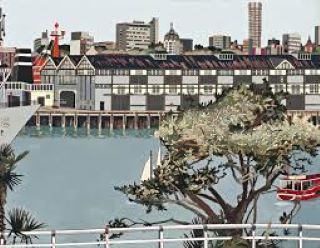
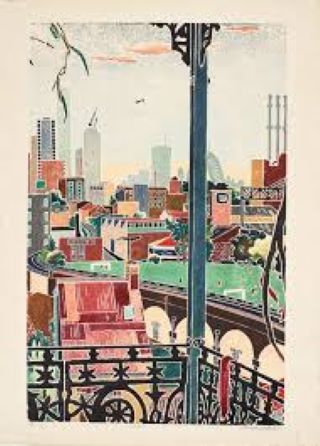
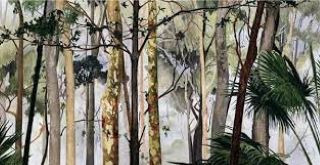
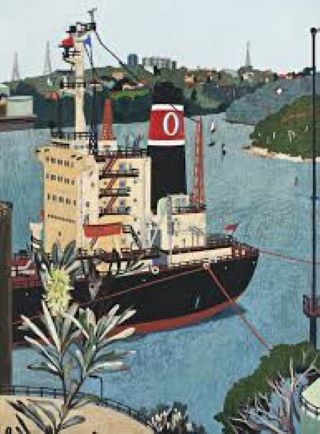
I looked at a number of these at the Canberra exhibition with an even greater sense of awe as many of them are extremely large and have to be presented as triptychs (panels of three).


Cressida is the youngest of four children, born into a typical but high achieving, creative family. Her father, Ross Campbell, was a well known writer and journalist, her mother Ruth was a journalist before having four children, her sister, Sally, is a textile artist, and her sister Laura (known as Nell) an actress and New York night club owner, and her brother Patrick was an eminent solar energy research scientist.
Coming from such a family, Cressida was obviously well supported and encouraged to follow her artistic vision, which was quite different from the accepted form of painting at the time. She left school at age 16 so she could paint full time. But when she went the Sydney College of the Arts, she only lasted there for three days! She realised that being to be told how to paint using big brushes to emulate conceptual painters such as Cezanne was a long way from her own artistic vision, and interests. She then went to study art at the East Sydney Technical School, which is today known as the National Art School. It was there she developed her unique woodblock print-making technique.
Cressida says "Leonard Matkevich, my printmaking teacher at East Sydney Technical College, encouraged me to experiment using one carved woodblock painted thickly with watercolour and letting it dry before placing it onto an etching press, spraying its surface with water, placing dampened paper onto it then rolling it through the press to produce a single print. It was very exciting to see the print appear with its beautiful damp colours and individual texture." 1
As mentioned in the previous post, Cressida also spent several weeks in 1985 studing the old masters' woodblocking techniques in Japan.
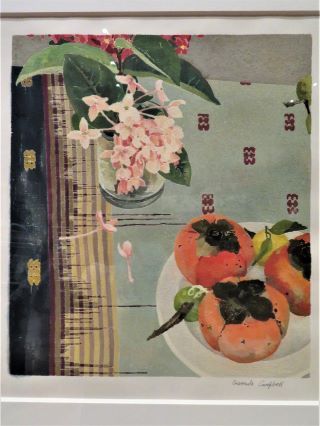
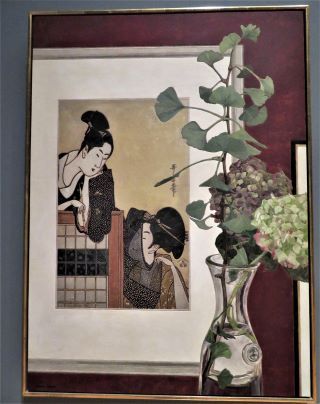
Cressida has since refined her processes to produce the detailed scenes we see today. She enjoys painting every day in her home studio, and no doubt the peace and calm has also been therapeutic for her, as her own life has not been without tragedy and sadness. She lost her father to cancer when she was 21, and then her husband Peter died in 2011 of the same disease. Her brother Patrick and mother Ruth have also passed away, and she herself was diagnosed with a brain tumour which had to be operated on, with a real risk of paralysis curtailing her painting career. Thankfully, she has recovered to a very large extent.
The following article by her friend of over 10 years, famous author Kathy Lette, offers some insight to the person behind the artist, and just why it is so important to Cressida that the objects, still lifes and scenes she paints must have meaning to her.

I think that Cressida is remarkably open and candid about both her work and her life, which is very generous, and enables us to better understand and appreciate her achievements in sticking to her ideals.
The following interview with her sister Nell describes their family life and important influences in Cressida’s life, and gives further insight to her motivations.

There is a lot to be said about staying true to yourself and your own ideals and aspirations.
Now, after more than 45 years, Cressida’s work is internationally recognised, with exhibitions held in the UK and Australia, and pieces held by The National Gallery of New South Wales, The National Gallery of Australia, Artbank, the National Museum, Krakow, Poland and the British Museum in London. Her work is also held in private collections in Australia, the UK, the USA and Monaco. One of her works, "Interior with Cat, 2010”, sold for a very impressive $515,455 AUD in August 2022, which just shows how valued and sought after her works now are.
Finally, whilst my photos at the National Gallery do not adequately capture the fine detail, I hope you enjoy the following short video of more of Cressida's works.
I can only say, if you get the chance to go to the exhibition at the National Gallery of Art in Canberra, you should certainly go! I promise you won't be disappointed!
Footnotes
- National Gallery, www.nga.gov.au


